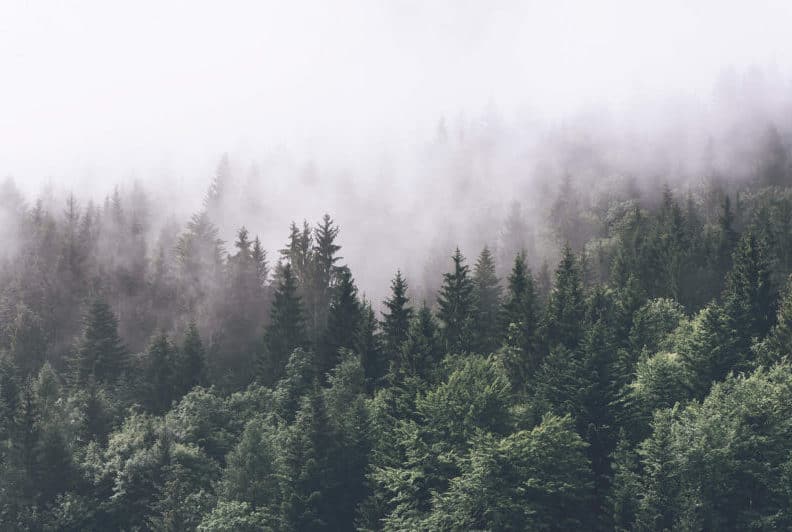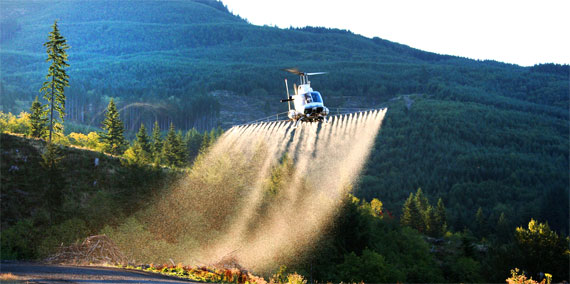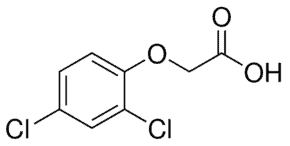
Spraying in North Cascades Forests?
This Naturalist Note was written by graduate student Gina Roberti as part of the Fall Natural History Project in North Cascades Institute’s M.Ed. Residency coursework. You can view other students’ work here.
As a graduate resident, I live and work within the boundaries of North Cascades National Park, surrounded by metamorphic peaks which assemble the headwaters of the Skagit River. Understanding the health of the Skagit Watershed is of great importance to me. As an environmental educator, teacher, and resident, an understanding of the history of land management in this watershed is central to my education and place as a resident of the North Cascades.
The following article reflects my personal journey researching the use of forest chemicals on public and private forest lands in the Pacific Northwest. I focused on a topic that is, by its nature, uncomfortable and not often discussed. Spraying of forest chemicals—herbicides, pesticides and fungicides—is a common, if not ubiquitous practice in the commercial forestry industry.
A report in Oregon documented 18,000 pounds of pesticides sprayed on forest lands in one year (within a study area of 184,320 acres). If these quantities are extrapolated to the roughly eight million acres of private forestland in Washington State, it is probable that hundreds of thousands of pounds of chemicals have been applied in Washington. While I failed to discover the quantity of forest chemicals applied in the Skagit watershed, it is likely on the order of tens of thousands of pounds over the last several decades.

In modern forestry practice chemicals are used at every stage of growth: herbicides reduce competition from understory plants, fungicides and insecticides target pests that thrive on densely packed monoculture stands, and fertilizers are used to stimulate growth of saplings once competing understory growth is eliminated. Washington State Department of Natural Resources website reports on their general information page that herbicides are typically applied “once or twice in the 40-to-65-year life span of a managed stand of timber in Washington state.”
While the amount of herbicides applied by the forestry industry is much less than that of the agricultural industry (15% vs. 72%, respectively, according to EPA data from 2006-2007), many of the chemicals used are shown through laboratory studies to be toxic at varying concentrations to wildlife, soil organisms and human health.
Glyphosate, one of the most widespread forest chemicals is the primary active ingredient in Roundup, 4-Dichlorophenoxyacetic acid (2,4-D) is  commonly found in herbicide lawn treatments in the US (though is banned for use on lawns and gardens in Denmark, Norway, and the Canadian provinces of Quebec and Ontario). Laboratory studies document the potential for glyphosate and 2,4-D to cause birth abnormalities, neurological problems, and behavioral changes in animal subjects.
commonly found in herbicide lawn treatments in the US (though is banned for use on lawns and gardens in Denmark, Norway, and the Canadian provinces of Quebec and Ontario). Laboratory studies document the potential for glyphosate and 2,4-D to cause birth abnormalities, neurological problems, and behavioral changes in animal subjects.
Most forest chemicals are synthetic compounds created in laboratories with specific targeted biological effects. Their derivatives can persist beyond the boundaries of permitted application areas, affecting the health of neighboring ecosystems, wildlife, forests and human communities. While State and Federal laws mandate protection of public resources (WA Forest Practices Act, Northwest Forest Plan, Endangered Species Act, Clean Water Act, etc.), State and Federal forest management policies also permit the application of forest chemicals regulated by the US EPA and Department of Agriculture.
Through my research I learned about the history of legislation governing forest practices in Western Washington and less about specific story of forest chemical use in the Skagit drainage.
My failure to find any publically reported numbers on the amount of forest chemicals applied historically in Skagit county suggests that close oversight (detailed documentation and monitoring) of forest chemical application is limited. Lack of data has made it difficult for me to reach any definitive conclusions about the history of forest chemicals in the Skagit drainage.
Resources
For an excellent article reporting on the widespread use and controversy of glyphosate (one of the most commonly used forest chemicals), see the following article from the Northern Woodlands (2012).
http://northernwoodlands.org/articles/article/the-great-glyphosate-debate
For further history on the impacts of forestry practices legislation such as the Northwest Forest Plan, see the following article from High Country News:
http://www.hcn.org/issues/45.7/seeking-balance-in-oregons-timber-country
The Washington State Department of Natural Resources (DNR) manages forest practices on public (state) and private timber lands in Skagit County. The link below is an overview of DNR policy on the use of forest chemicals, with links to WA Forest Practices legislation.


I live near Rockport, in an area about to be affected by timber harvesting, and would be very interested in talking with the author about her findings and her thoughts. Would it be possible for her to contact me?
Since we share watersheds with public and private watersheds and may be impacted by their toxic chemical use, it is time to change the state law to require reporting of the chemicals used, where, when, and in what quantities. And to work toward phasing out glyphosate, and others.
Hello all,
Thank you all for your engagement with this brief report! Regretfully, my time researching this issue was on the whole inconclusive. Attached are a few more follow-up sources from the author.
Lack of data has made it difficult for me as a researcher to definitively come to any conclusions about the history of forest chemicals in the Skagit drainage. Perhaps these data are compiled and tracked by the Washington DNR or other agencies outside of my knowledge.
~~
In my understanding, when a spray area is approved by the Forest Practice Board in Washington State, the permit grants approval for use of chemicals for three years. Information about when exactly the spray will occur, what specific chemicals are sprayed and the amount are not publically reported. Forest Practices laws in Washington state require a 200-foot buffer zone around residences and a 100-foot buffer around agricultural lands, but no buffer is required around public schools or businesses.
The below letter to the WA Department of Natural Resources Forest Practices Board provided some context for the recent call for improved notification and reporting of forest chemical use in Washington and Oregon.
Golding, W. (2016). Petition for New Forest Practices Rule (RCW 34.05.330; WAC 222-08-100) Related to Notice and Disclosure for Aerial Spraying of Forest Chemicals. Washington Forest Law Center; Regulatory Environmental Law and Policy Clinic: University of Washington School of Law. Retrieved from: http://www.dnr.wa.gov/publications/bc_fpb_mtgpacket_2_20160511.pdf
~~
It has proven difficult to track down exactly when the use of chemical herbicides became widespread in the Pacific Northwest. The Washington Department of Agriculture, which oversees the licensing of chemical pesticides (forest herbicides are included in this category), lists over 150 different chemical suppliers on their webpage. One can assume that chemical herbicides have been applied to forests in the Pacific Northwest since the 1980s. My impression from speaking with forestry managers is that herbicide application is more closely regulated on public lands, though chemical herbicides are still used. State and privately managed forest lands in Washington represent the majority of active timber sales. The quantity and frequency of herbicide, pesticide and fertilizer application on these lands in the last several decades remain to me unknown.
thanks for shining a little light on a dark subject. … I met and talked to you couple weeks ago maple pass about a marine fossil from the region. I would like to get it to you for NCI . Its kind of a missing link from the Methow ocean to todays north cascades. Was up at Cutthroat pass a week ago in the snow & dropped by NCI but no one around. Any ways it is kind of wow and I know you will get it where it needs to go. In Arlington Carl
Hello Carl!
This is a bit of a late follow-up to your comment, but it may still be relevant.
It was wonderful speaking with you on Maple Pass. If you are still interested in donating to our natural history collections, you are welcome to do so! Please include a description of the fossil locality (where it was found) and any other relevant information (your name, date of collection, and reason for donating to the collection).
For more information about the North Cascades Institute Natural History collections, see a short blog post on the subject: https://blog.ncascades.org/life-at-the-learing-center/from-crinoids-to-concrete-sundew-collections-serves-as-a-window-into-the-geologic-past/.
Please feel free to mail the specimen to the Institute’s office in Sedro Woolley (810 Moore St, Sedro-Woolley, WA 98284) or deliver in person to either the Environmental Learning Center or Sedro Woolley office. If you include my name (Gina Roberti) I am happy to make sure it gets to the correct place.
Thank you again!
Gina